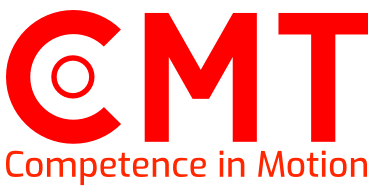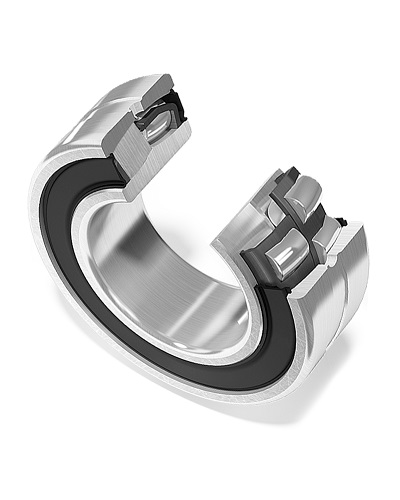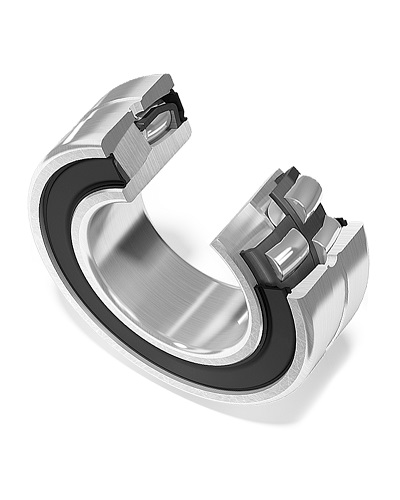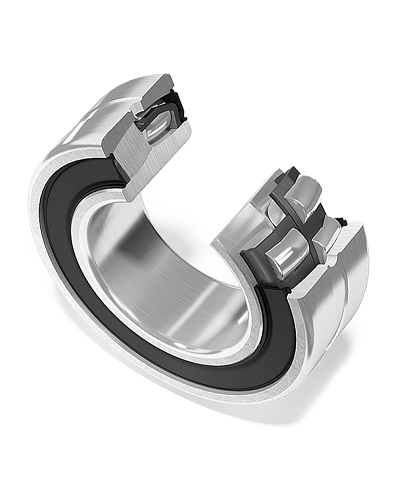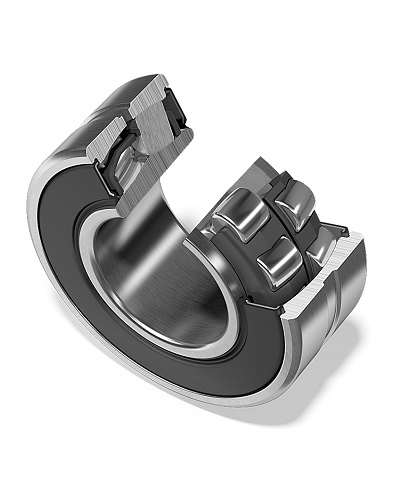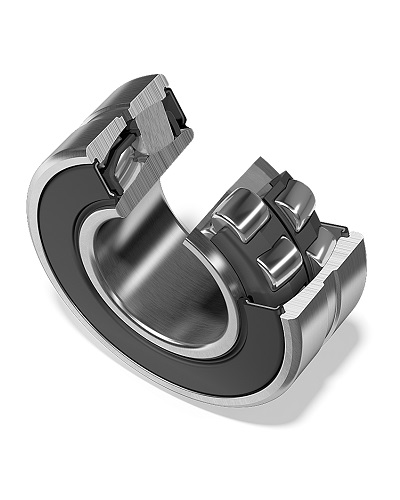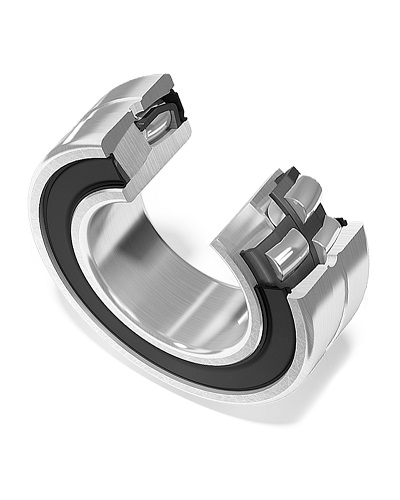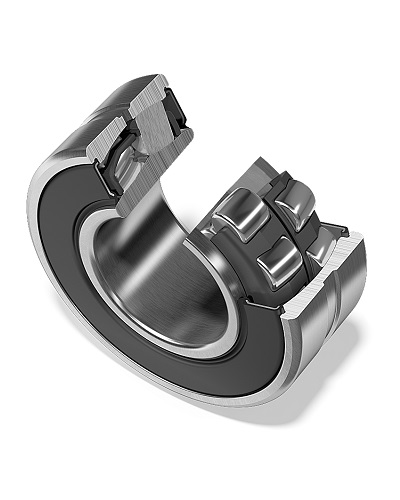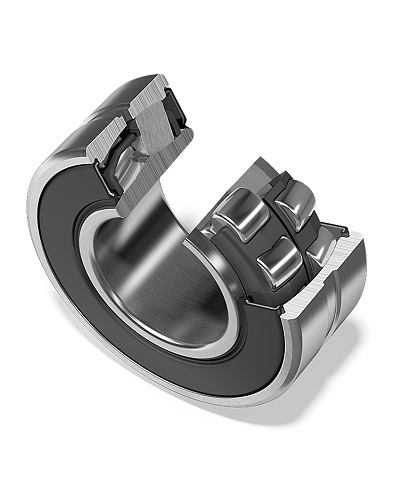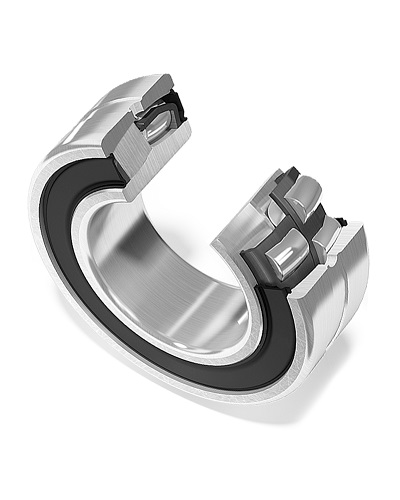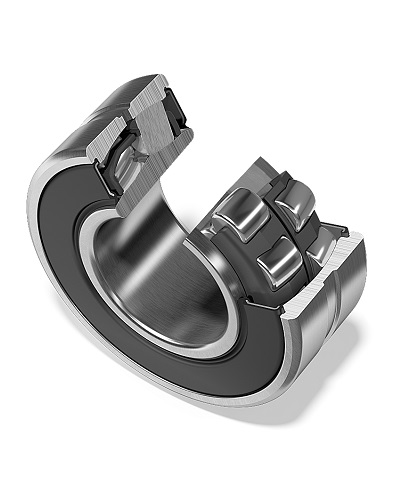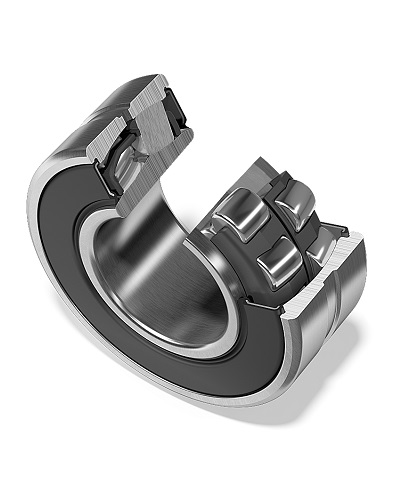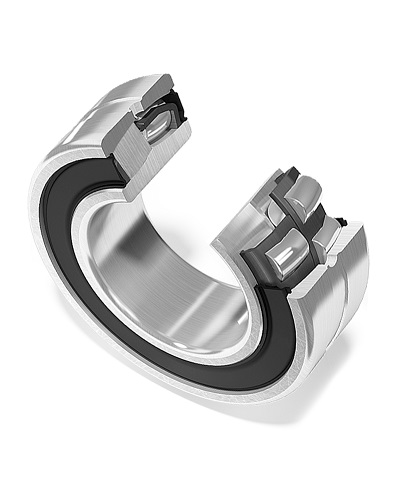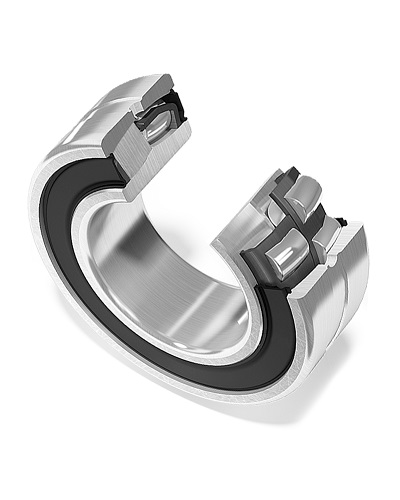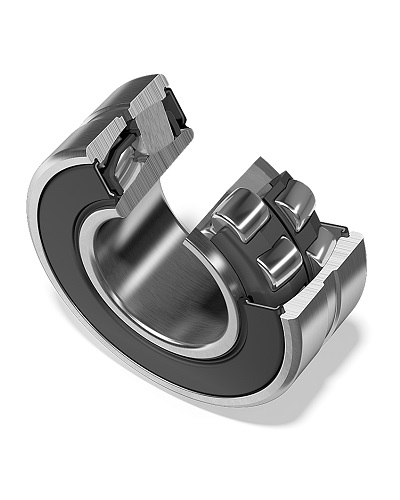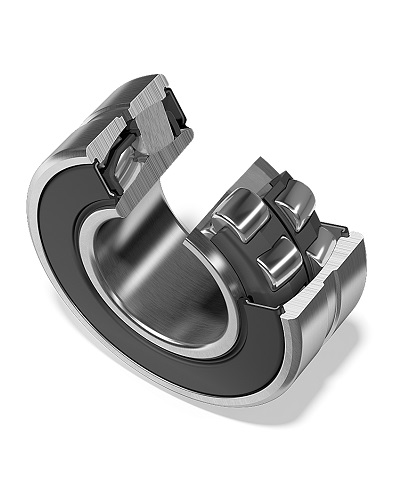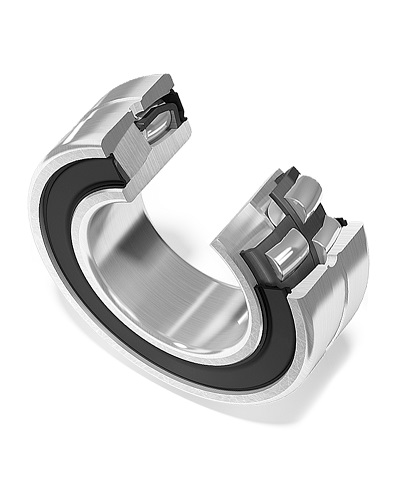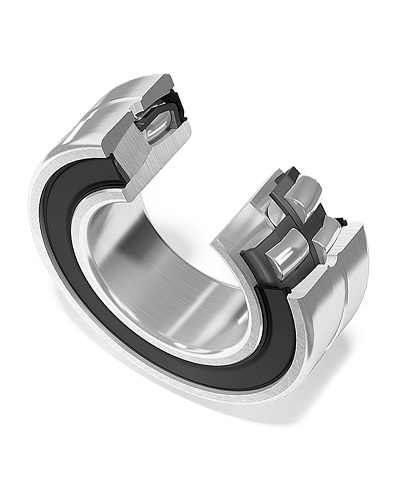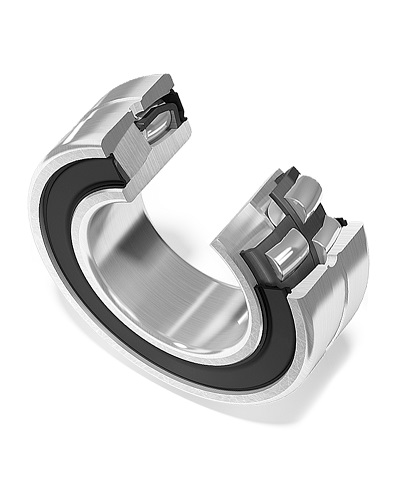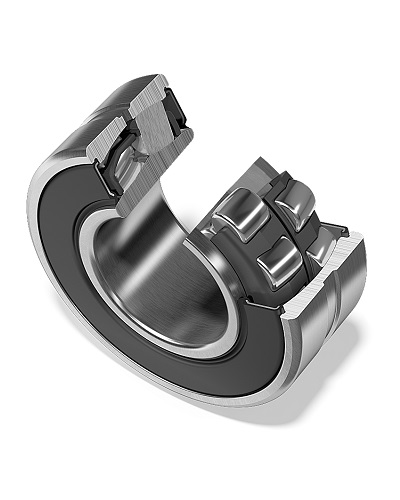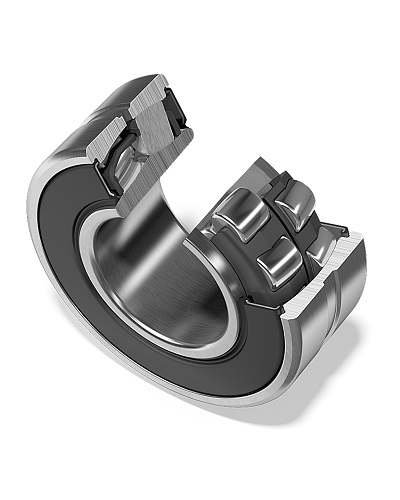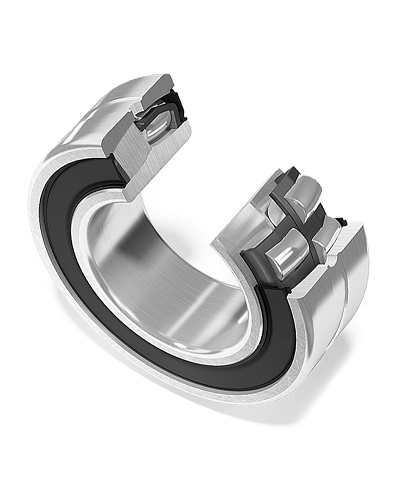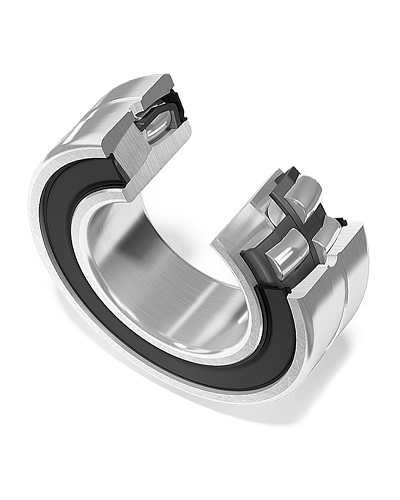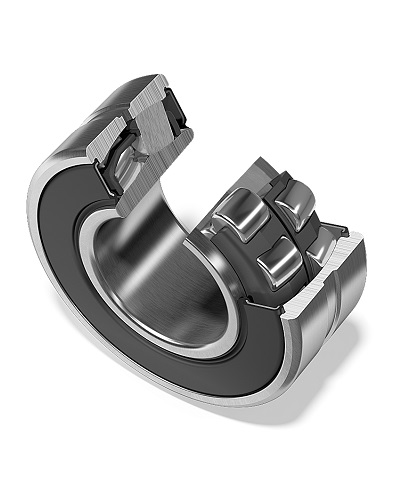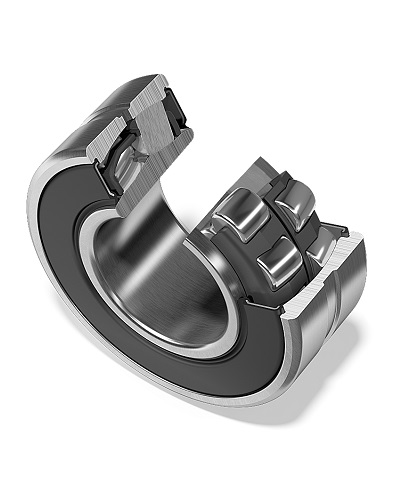-
Products
- Linear Rolling Guidance Systems
-
Rolling Bearings
- Deep Groove Ball Bearings
- Shoulder Ball Bearings
- Angular Contact Ball Bearings
- Self-Aligning Ball Bearings
- Self-Aligning Spherical Roller Bearings
- Barrel Roller Bearings
- Tapered Roller Bearings
- Cylindrical Roller Bearings
- Needle Roller Bearings with Cage
- Drawn Cup Needle Roller Bearings
- Full Complement Needle Roller Bearings
- Track Rollers, Cam Rollers, Support Rollers
- Axial Needle Roller Bearings
- Combined Radial-Axial Bearings
- Combined Precision Roller Bearings
- Slewing Rings
- Rod Ends, Spherical Plain Bearings
- Freewheels, Backstops
- Bearing Housings
- Bearing Units
- Locknuts, Sleeves
- Shaft Couplings
- Locking Assemblies
- Drive Chains, Conveyor Chains
- Drive Belts, Conveyor Belts
- Cleaners, Lubricants, Adhesives, Sealants
- All products
- Brands
- Company
- InfoCenter
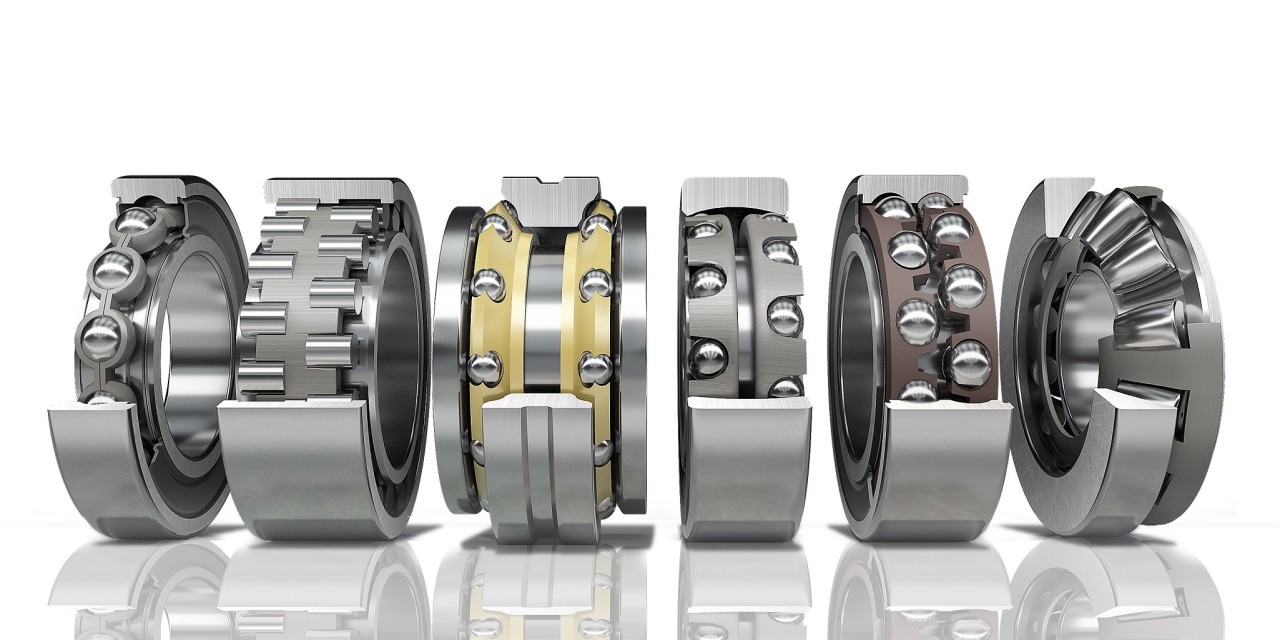
Rolling Bearings
Rolling Bearing Technology
A rolling bearing normally consists of two rings with corresponding rolling element raceways, the rolling elements placed between them and the cage separating them. The construction ensures a flexible connection between two mechanism elements that rotate in relation to each other. A roller bearing ensures precise and low-friction rotary movement at various loads and speeds.
Rolling bearings are divided into ball bearings and roller bearings. The first with balls as rolling elements theoretically have point contact and the second with rollers as rolling elements have linear contact with the raceway. Accordingly, these are used for higher speeds or higher loads.
Depending on the design or combination of designs, they take on radial and / or axial forces.
As one of the most common mechanism parts, rolling bearings are manufactured in a wide variety of designs and materials and are available in both metric and imperial dimensions. In addition to numerous bearing steels, bearings are made of stainless steels or with various coatings, made of aluminum, ceramic, glass or plastic, but also combined into hybrid types.
